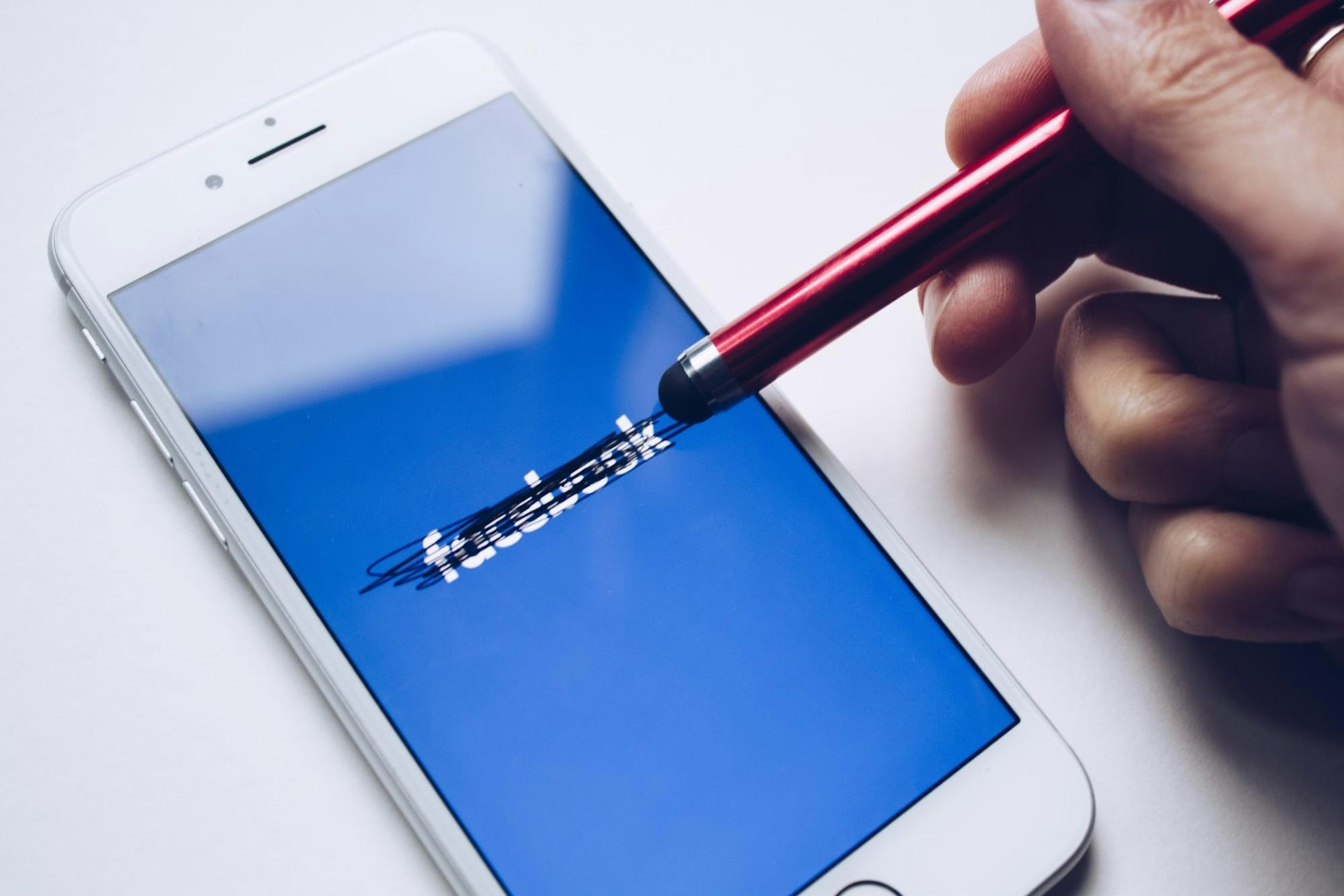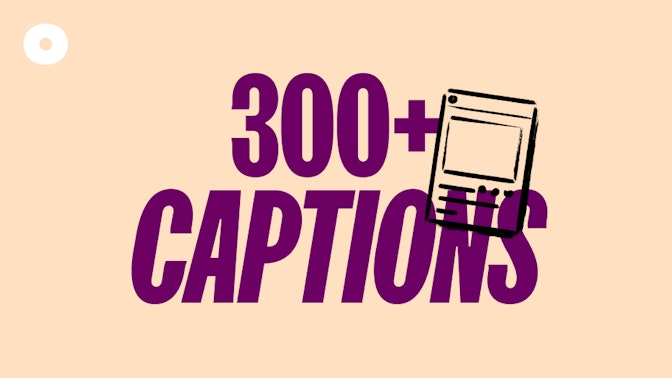Listen to your Grandma: Don’t put all of your eggs in one basket.
Sure, your Gran probably wasn’t talking about Facebook marketing, but her wisdom holds true.
For some time now, the cost of advertising on Facebook has increased while impressions have gone down.
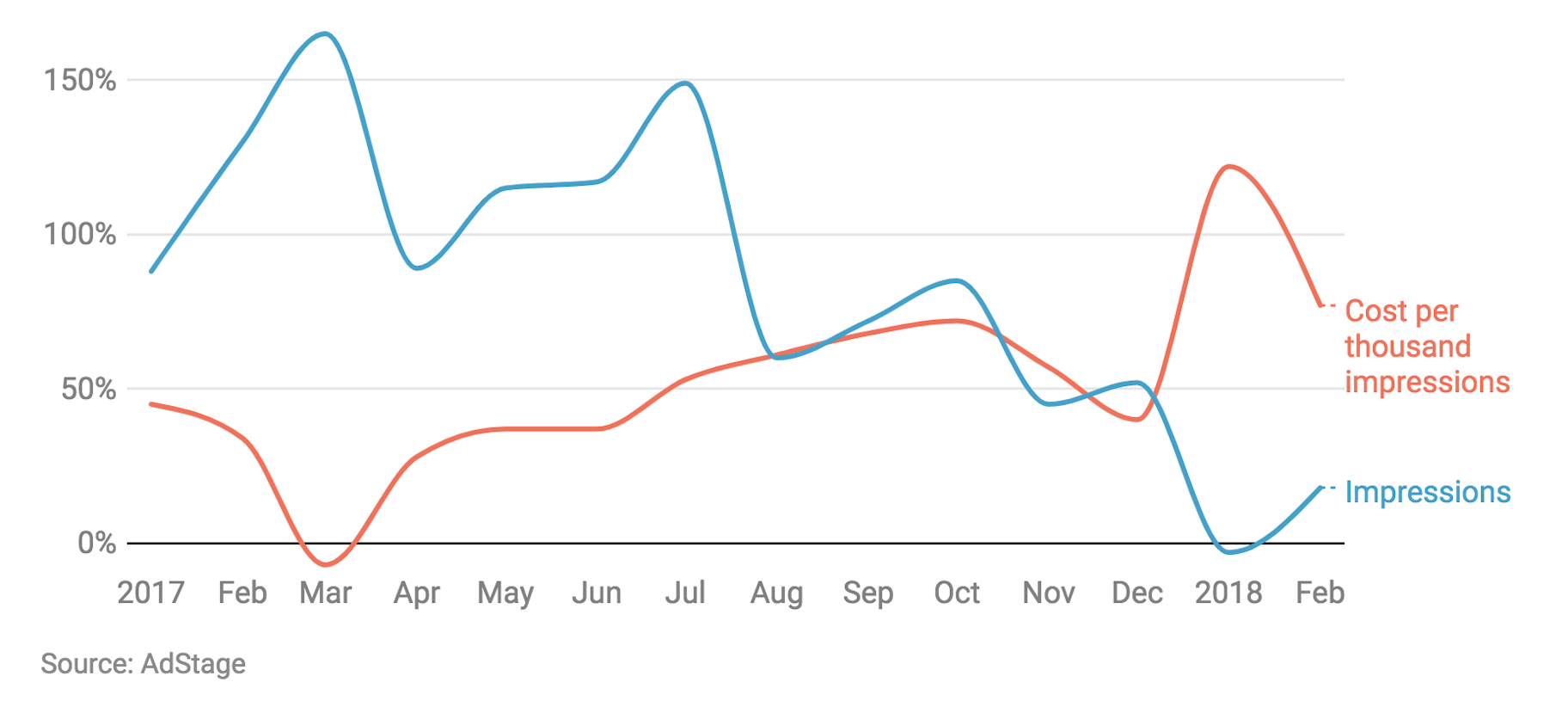
Relying too much on one sales channel is dicey for any business. You’re bound to get caught with your pants down at some point.
Plus, you’re missing out.
People don’t just use Facebook. In fact, the average internet user has an average of 7.6 social media accounts!
There are also tons of other advantages to diversifying your advertising channels, such as cross-channel retargeting.
Bottom line, diversity brings security and advantages.
In this article, you’ll get an overview of seven channels that are great alternatives to Facebook.
Let’s dive in.
Post Contents
- Facebook Alternative #1: Google Ads
- Facebook Alternative #2: Instagram
- Facebook Alternative #3: YouTube
- Facebook Alternative #4: Twitter
- Facebook Alternative #5: LinkedIn
- Facebook Alternative #6: Snapchat
- Facebook Alternative #7: Pinterest
- Bonus Facebook Alternative: Influencer Marketing
- Summary
- Want to Learn More?

Don’t wait for someone else to do it. Hire yourself and start calling the shots.
Get Started FreeFacebook Alternative #1: Google Ads
Google Ads is one of the best alternatives to marketing on Facebook.
In fact, Google is the only digital advertising channel that receives more U.S. digital ad spend than Facebook.
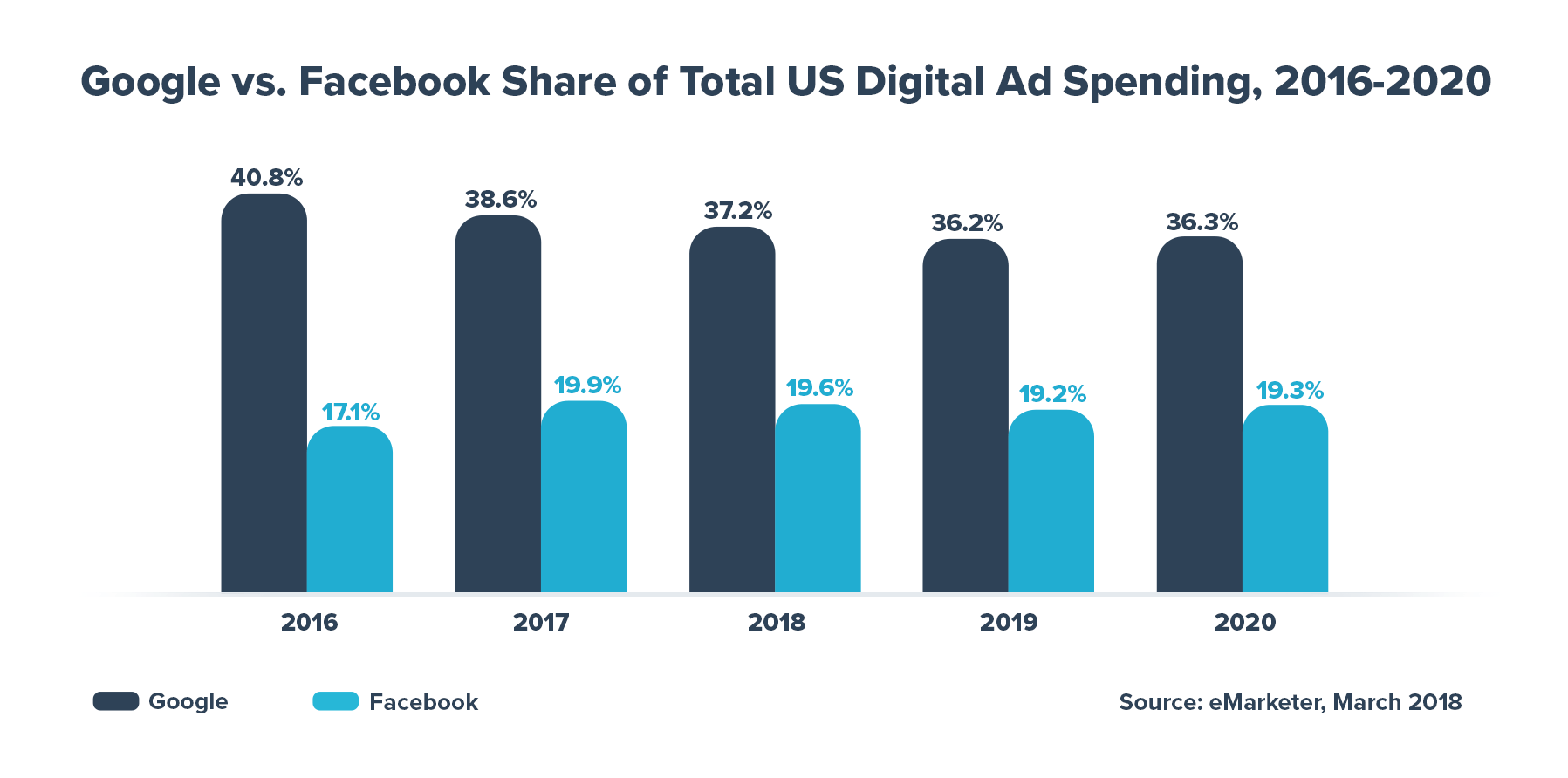
You can use Google Ads to advertise on their Search Network and/or their Display Network.
Advertising on Google’s Search Network is when you bid to place your ads on Google’s search engine results page, or “SERP.”
Here’s an example from footwear company Vivobarefoot:
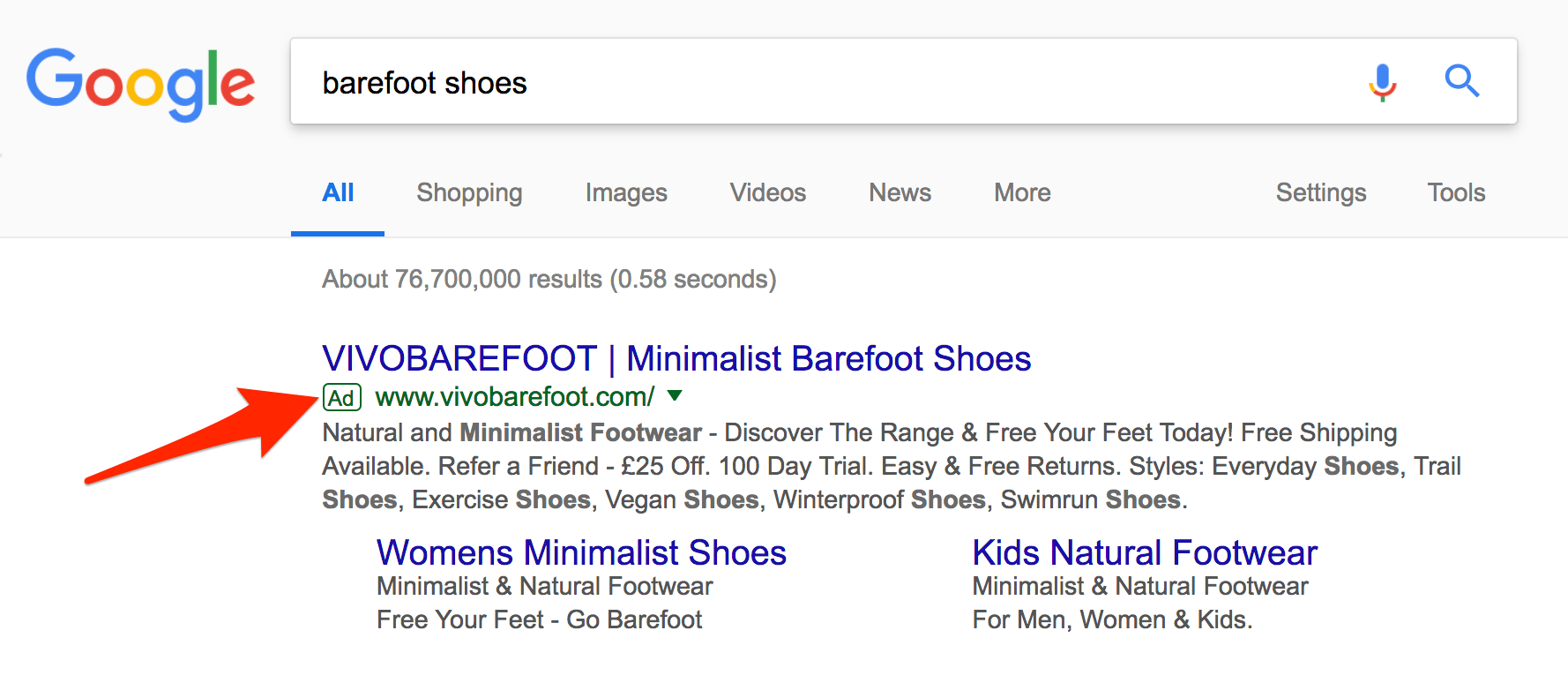
Next, advertising on Google’s Display Network lets you place ads on websites which use Google AdSense:

There are numerous benefits to using Google Ads, such as:
- Advanced targeting
- Budget control
- Highly measurable
- Fast results
- Remarketing tools
Google Ads is based on a pay-per-click auction system.
In essence, advertisers bid on keywords, and the highest bid wins the advertising opportunity. Then, advertisers pay Google each time someone clicks on one of their ads.
To get started, check out our guide: Google Ads Tutorial: A Step-by-Step Guide to Your First Campaign.
Facebook Alternative #2: Instagram
Instagram may be owned by Facebook, but it’s a different beast entirely.
Instagram has experienced massive growth in recent years and now has more than one billion monthly active users.
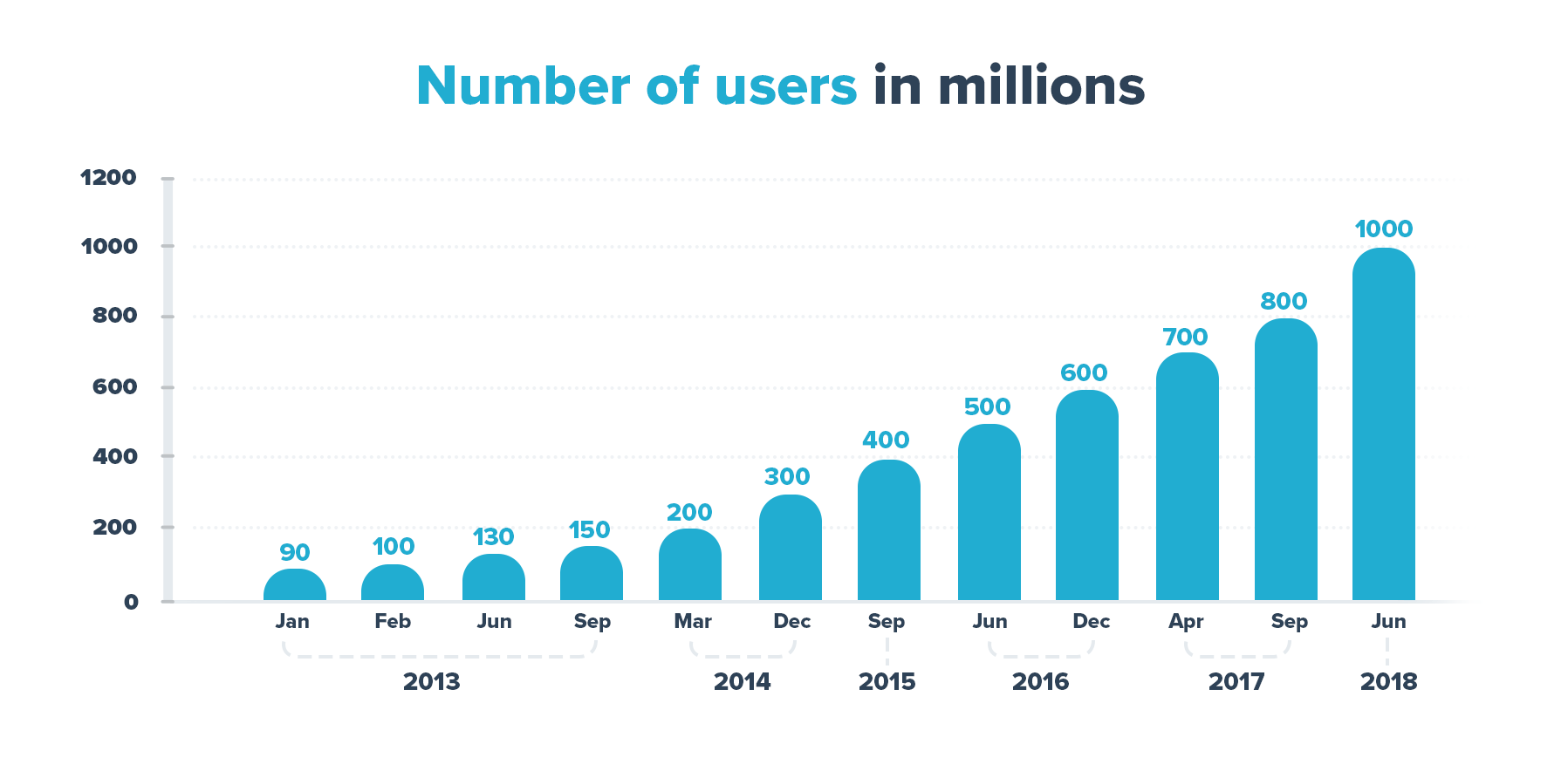
So much so, that many advertisers are shifting ad dollars from Facebook to Instagram.
In fact, performance marketing agency Merkle recently reported that ad spend on Instagram was growing at four times the rate of ad spend on Facebook.
Specifically, year on year during Q2, Instagram’s ad spend went up 177 percent compared to Facebook’s 40 percent increase.
And there’s more.
This advertising channel is ideal for businesses outside of the U.S. or those looking to expand internationally, as 80% of the platform’s user base lives outside of the U.S.
Unsurprisingly, most of Instagram’s users are Millennials. In fact, 31% of Instagram users are 18 to 24 years old, and 30% are 25 to 34.
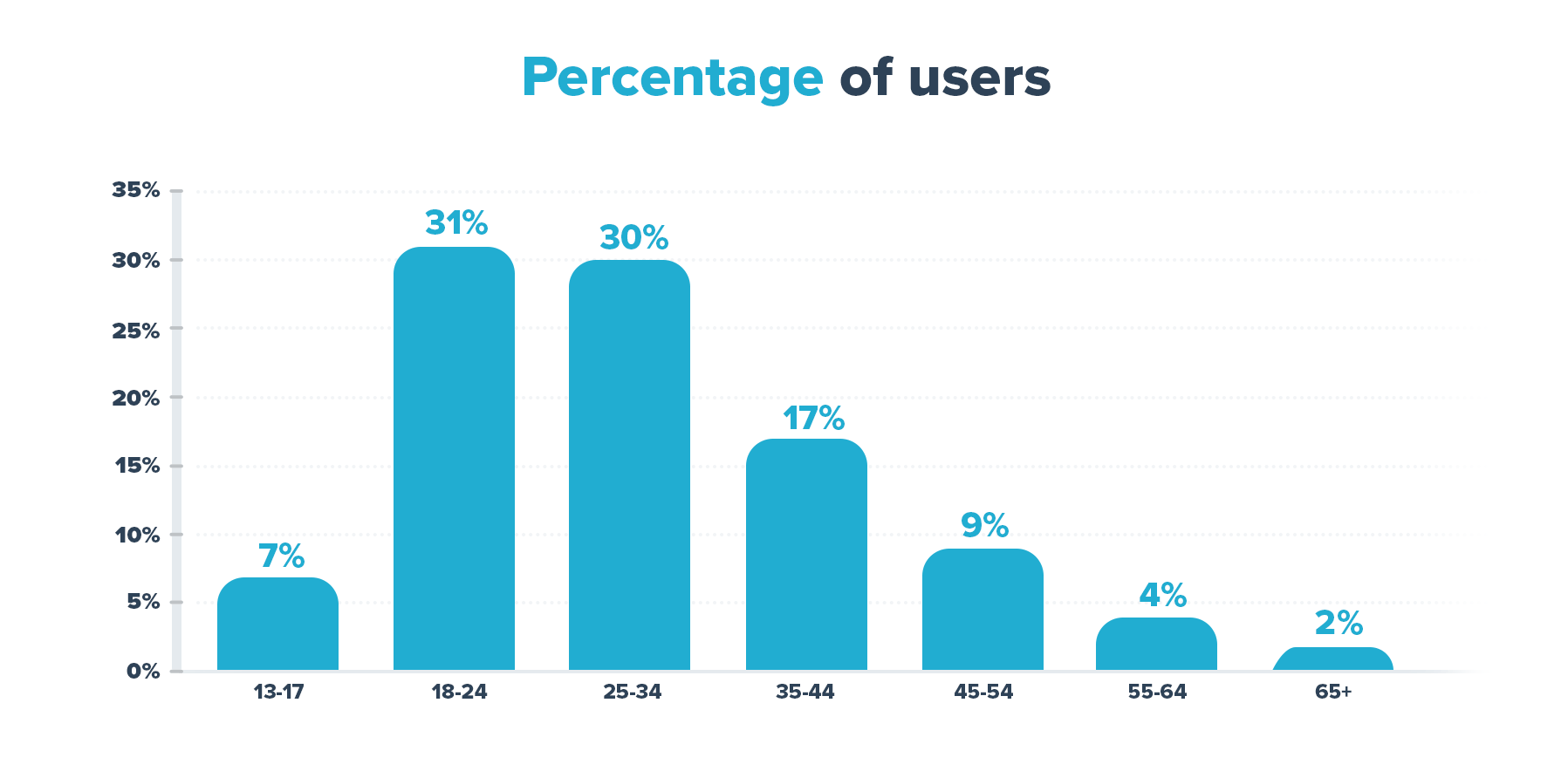
- Photo ads
- Video ads
- Carousel ads
- Slideshow ads
- Stories ads
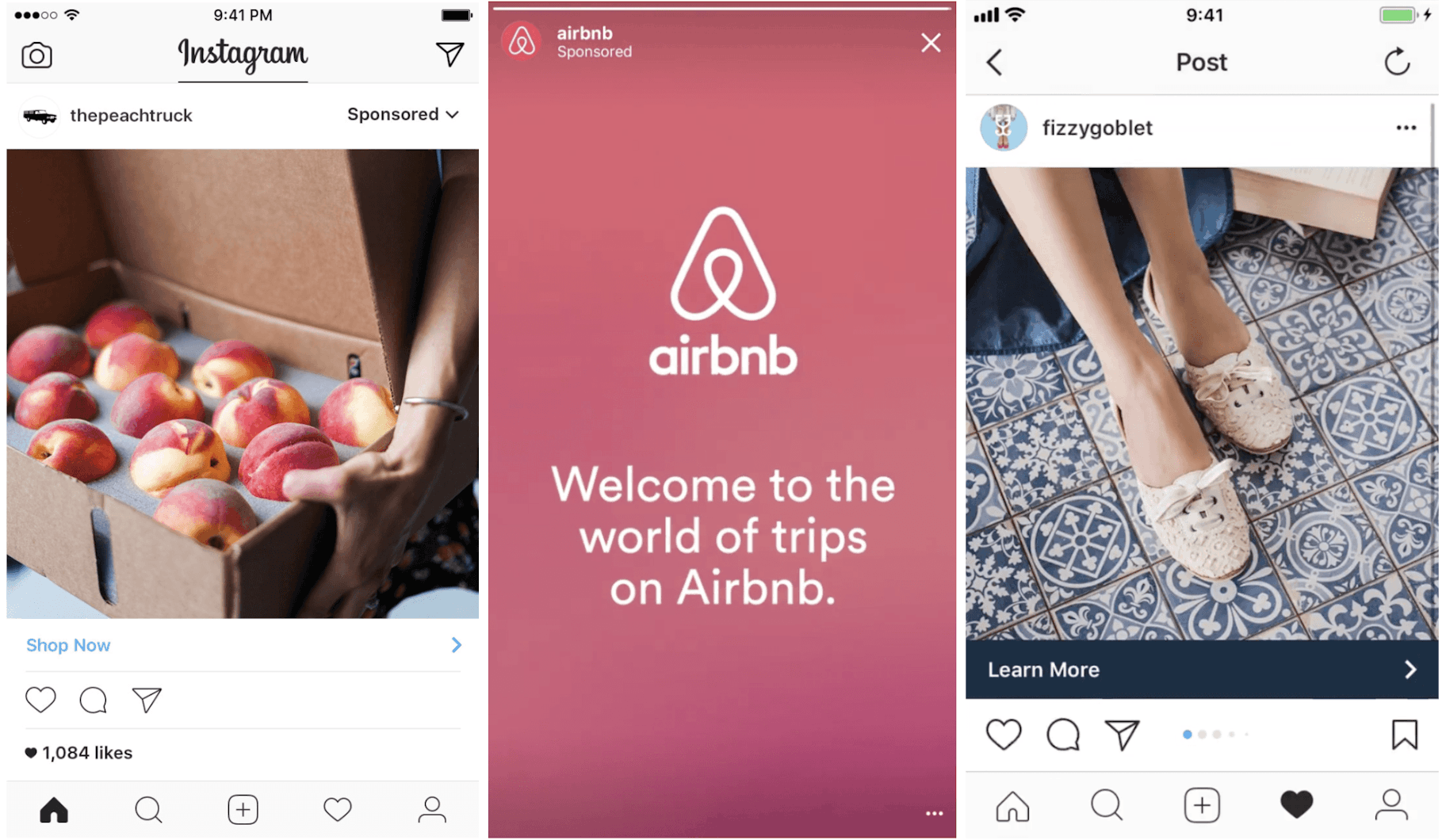
It’s also easy to get started with Instagram ads if you’re currently advertising with Facebook. This is because Instagram ads are managed through Facebook’s ad manager.
Facebook Alternative #3: YouTube
YouTube now has nearly 1.8 billion monthly active users.
It’s Google’s most popular service, with viewers watching more than 1 billion hours of video each day.
Here’s the crazy part…
YouTube on mobile alone reaches more 18-49 year-olds than any cable network in the U.S.
This advertising channel is well worth exploring, especially as video content is expected to claim 80 percent of all web traffic by 2019.
And according to “The State of Video Marketing in 2018,” 81 percent of people are convinced to buy a product or service by watching a brand’s video. Plus, 76 percent of businesses say video helped them increase sales.
When it comes to marketing, YouTube is a suitable alternative (or addition) to Facebook, with advanced targeting, remarketing capabilities, and plenty of other features.
There are six types of YouTube ads you can use:
- TrueView ads
- Non-skippable instream ads
- Bumper instream ads
- Sponsored card ads
- Overlay ads
- Display ads
These various advertising formats allow you to get extremely creative with your messaging and content.
For example, check out how Nike showcases their brand personality in this six-second bumper video ad:
YouTube also allows you to set your video campaign objective from one of the following:
- Leads
- Website traffic
- Product and brand consideration
- Brand awareness and reach
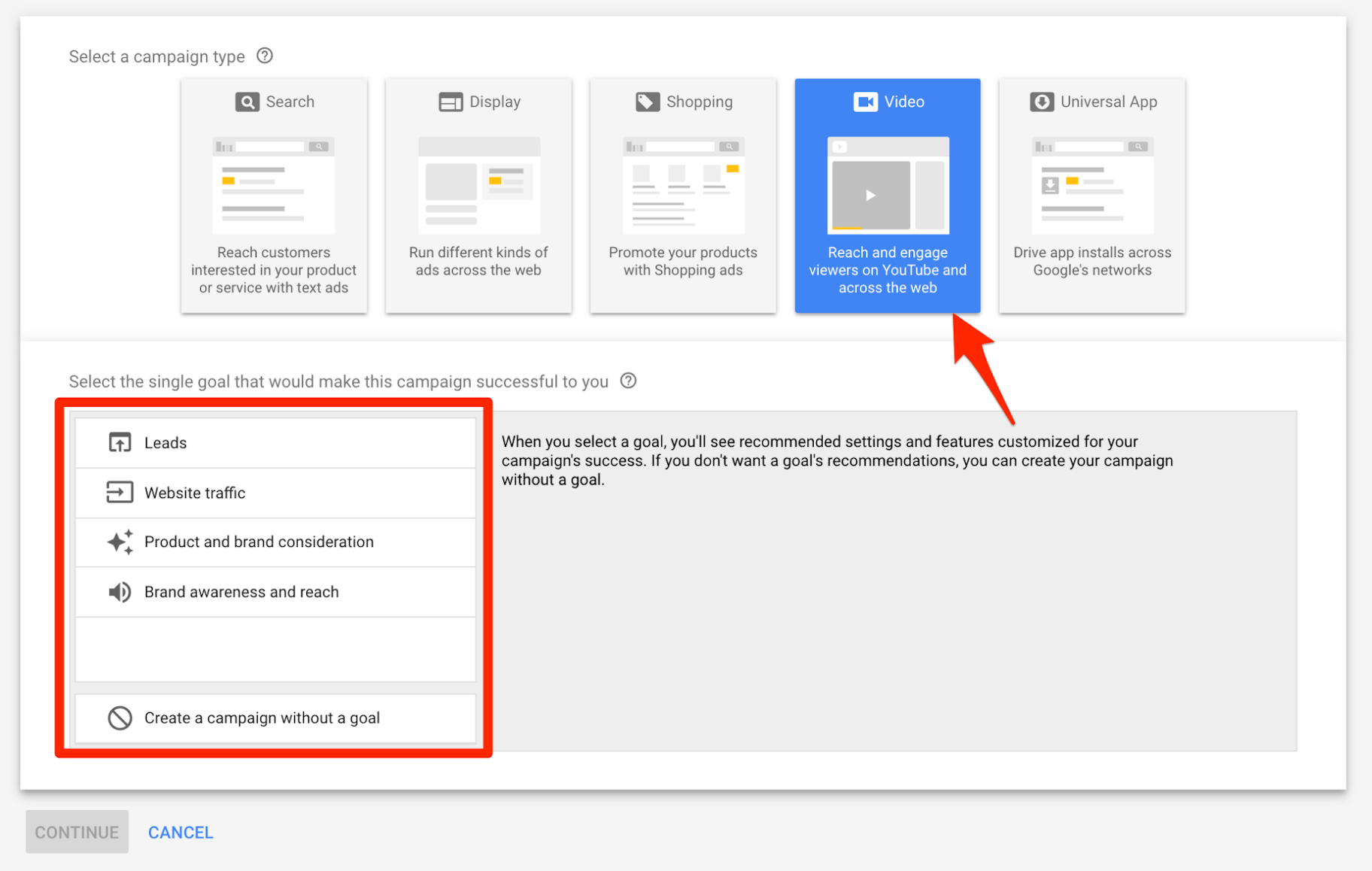
To get started, check out: YouTube Ads for Beginners: How to Launch Your First Campaign.
Facebook Alternative #4: Twitter
Although Twitter’s growth has plateaued in recent years, the platform is still a social media titan with more than 330 million monthly active users.
Furthermore, 42 percent of Twitter users access the app every day to send hundreds of millions of tweets.
Although Facebook towers over Twitter when it comes to the number of users, a massive 24 percent of U.S. adults still use this platform.
But that’s not all.
According to a report from Twitter and Research Now, 93 percent of people who follow small and medium-sized businesses (SMB) on Twitter plan to purchase from the SMBs they follow.
The site is particularly useful if your target audience is Millennials. The chart below shows Twitter users by age:
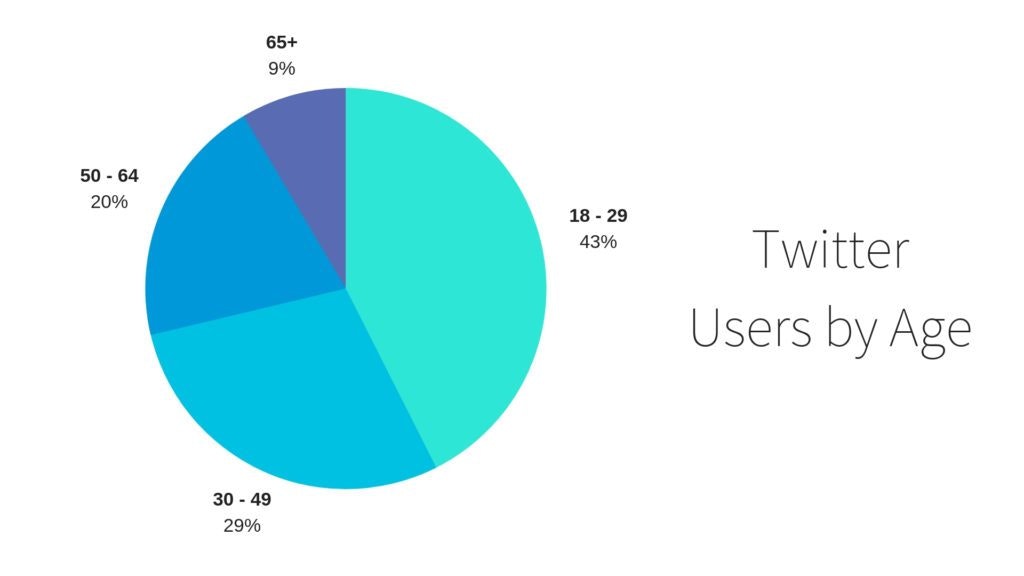
And these aren’t your average Millennials, either.
Twitter says that 80 percent of its users are “affluent Millennials.” So, as a platform full of Millennials with disposable cash, Twitter is definitely a viable alternative to Facebook.
There are two ways to advertise on Twitter.
You can use Twitter’s Promote Mode, or jump into full-blown Twitter ads:
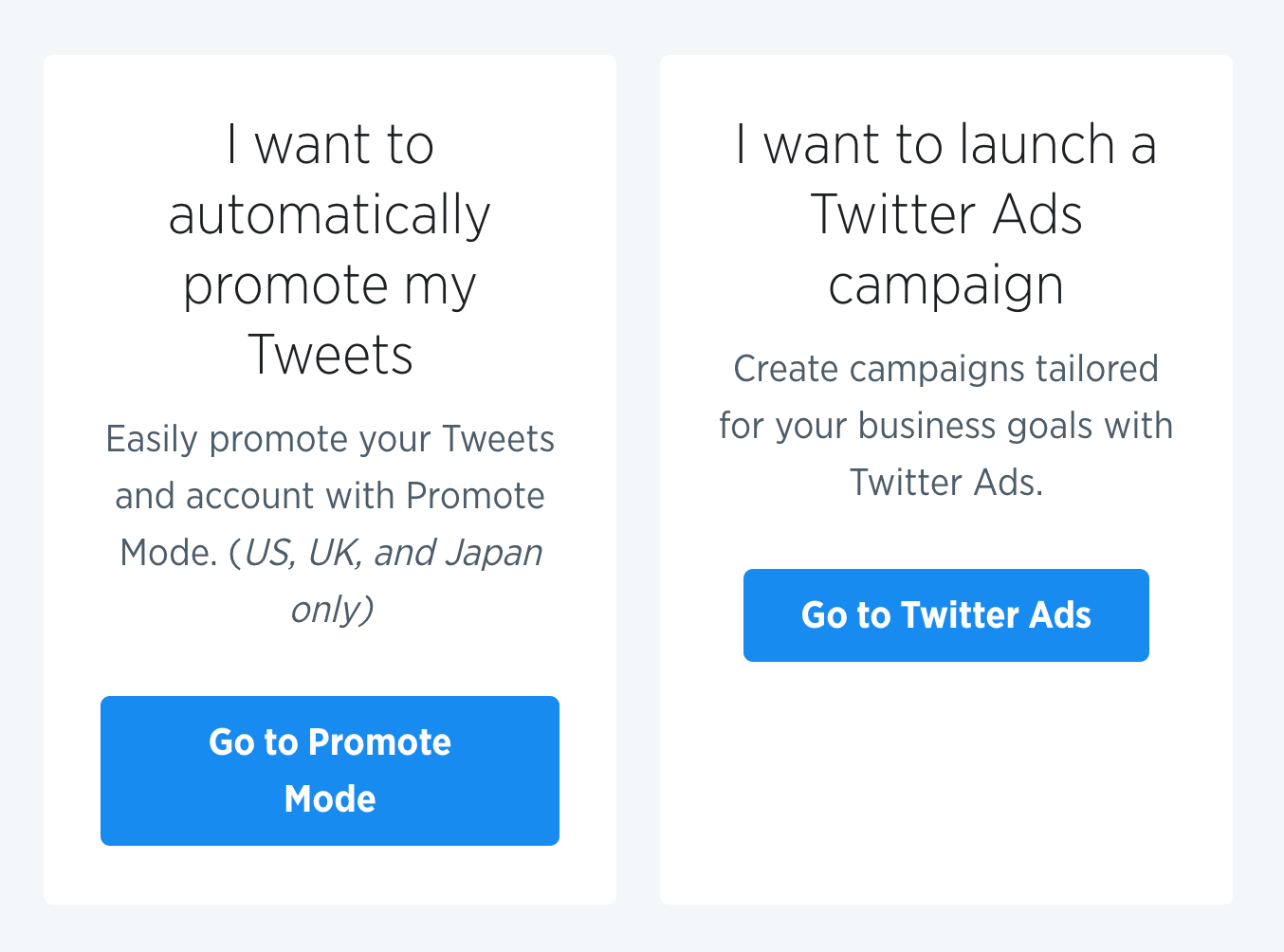
Promote Mode is easier to use and allows you to promote your tweets and account. (Unfortunately, this advertising feature is only available in the U.S., UK, and Japan.)
Twitter ad campaigns are far more customizable.
To start, you choose a campaign objective and then target your desired audience by factors such as location, gender, age, behaviors, and who they follow.
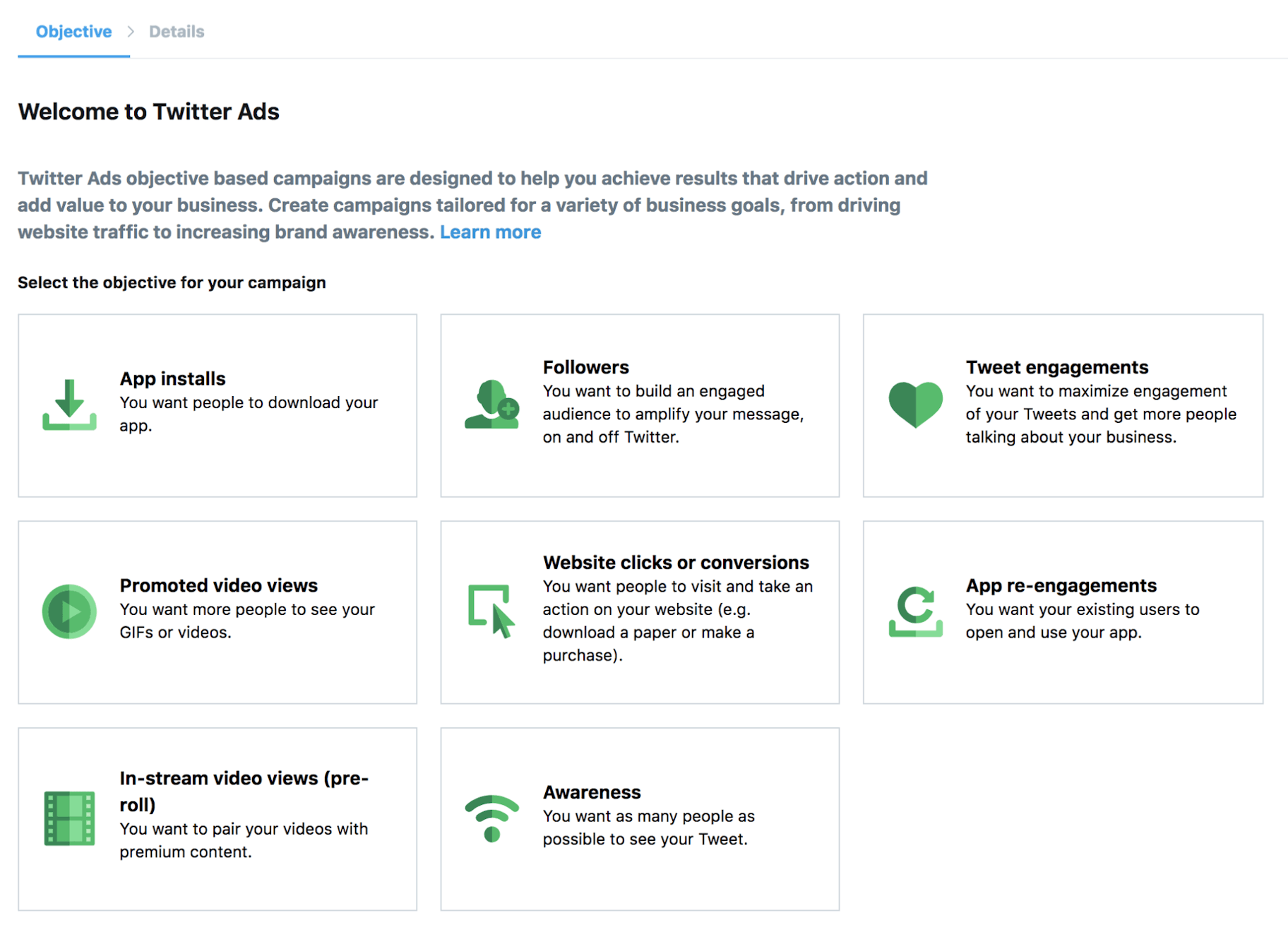
Twitter charges advertisers in different ways, depending on the campaign objective.
For example, if you’re trying to increase your website traffic, you use a pay-per-click system and pay each time someone clicks on your ad. However, if you’re promoting a video, you pay each time a user views it.
To get started on Twitter, check out: The Ultimate Guide to Using Twitter for Business Success in 2018
Facebook Alternative #5: LinkedIn
With more than 645 million users, LinkedIn is the leading social channel for business-to-business (B2B) marketers – in fact, 92 percent of B2B marketers prefer to use the platform over all others.
That’s huge.
However, it’s easy to understand when you consider the fact that 80 percent of B2B marketing leads from social media come through LinkedIn.
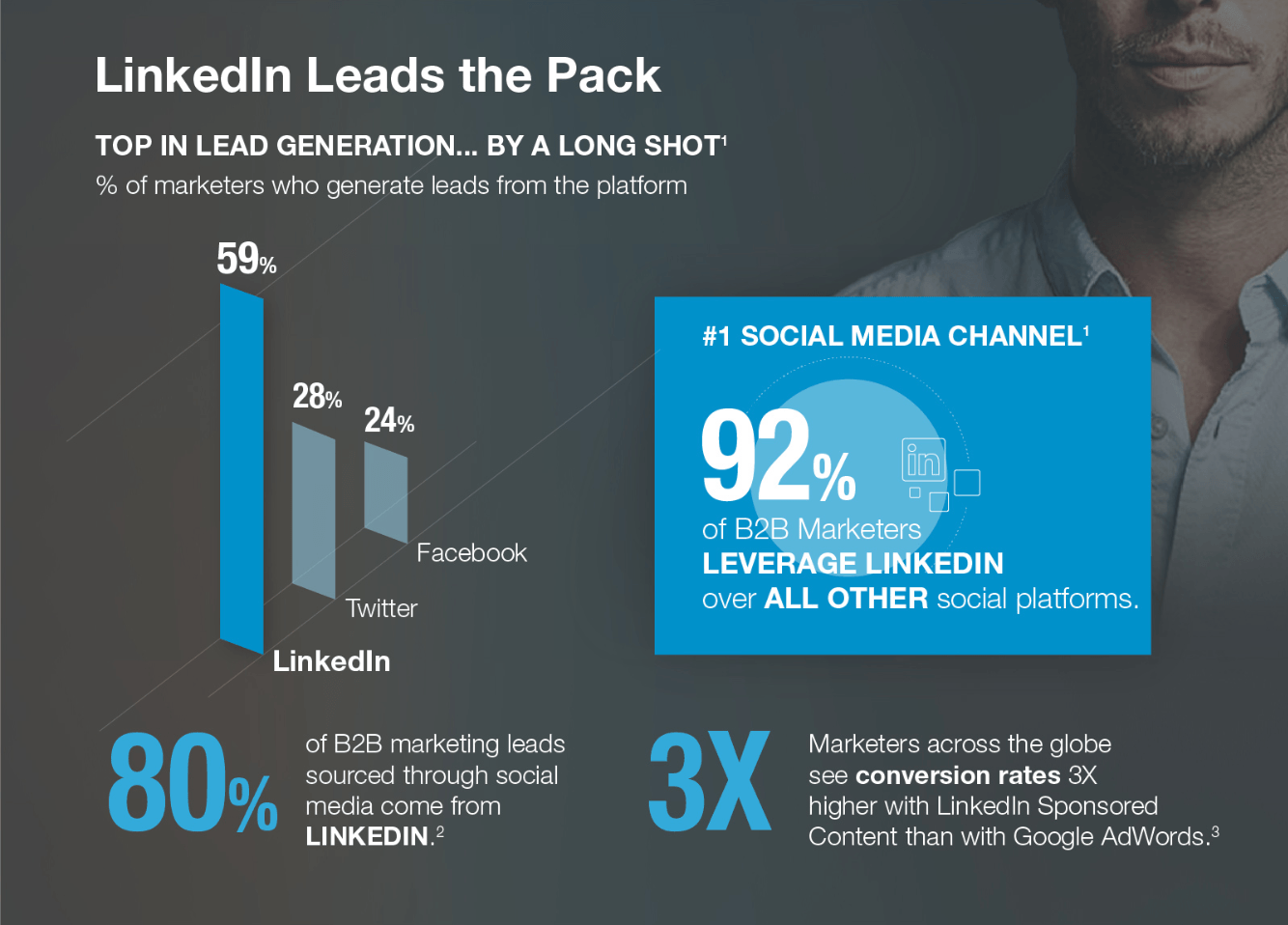
There are two ways to advertise on LinkedIn: Self-serve ads and/or Partner Solutions:
- Self-serve ads allow you to create and publish your own advertisements through the LinkedIn Campaign Manager.
- LinkedIn Partner Solutions is a way for larger businesses to talk with an expert at LinkedIn and access premium display advertising options.
Both are effective marketing alternatives to Facebook.
For smaller enterprises and those just starting a business, LinkedIn emphasizes how cost-effective self-serve ads can be – starting from as little as $10 per day.
There are three types of self-serve LinkedIn ads to choose from:
- Sponsored content
- Text ads
- Sponsored InMail
Let’s take a quick look at each of these types of LinkedIn ads.
Sponsored Content ads are shown in user’s feeds:
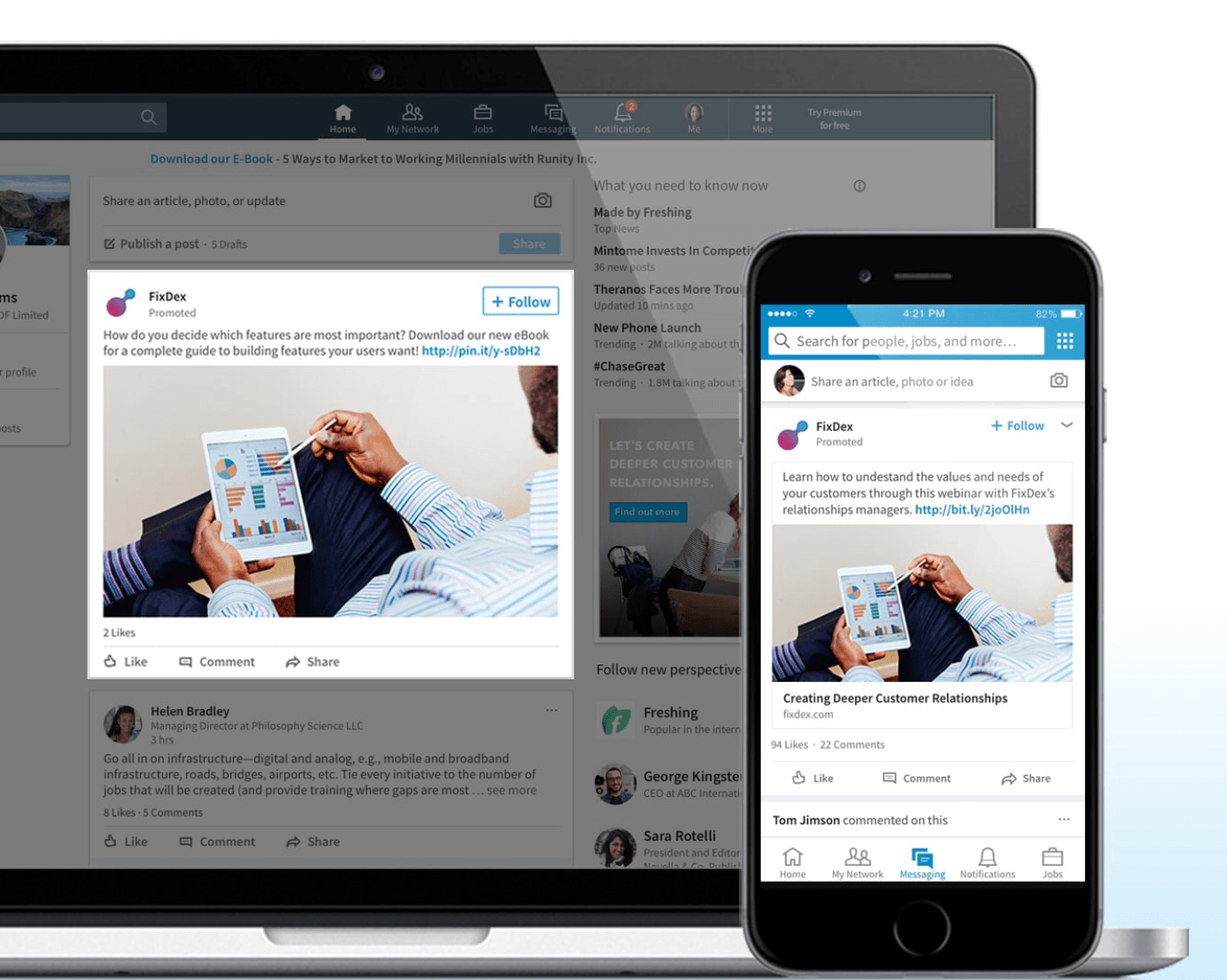
Text Ads are shown in the sidebar of users’ feeds and LinkedIn messenger.
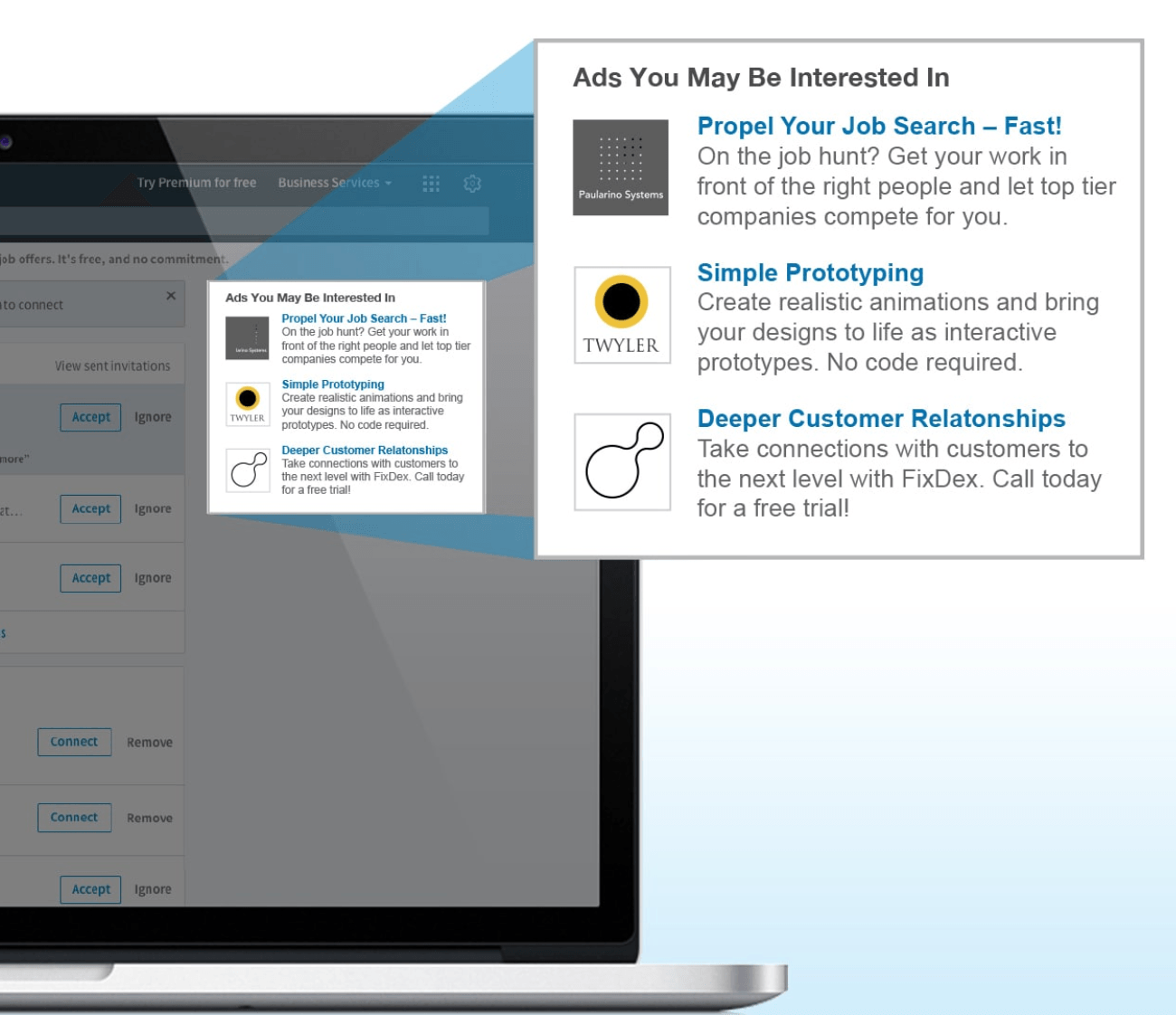
Sponsored InMail lets you send messages – which look the same as regular InMail – directly to users’ LinkedIn inboxes.
These three types of self-serve ads allow you to target users across devices by factors such as age, gender, location, school, job function, title, or company.
To get started, check out: The Beginner’s Guide to LinkedIn Ads: How to Setup Your First Campaign.
Facebook Alternative #6: Snapchat
Although it’s the sixth most popular social media platform in the world, Snapchat is probably the least understood mainstream social media network.
When content doesn’t last longer than one day and there’s no traditional feed to scroll through, many businesses just don’t “get it.”
So what is Snapchat?
Simply put, it’s part multimedia messaging app and part social network.
Users “chat” with friends by sending them short video clips, animations, and photos called “Snaps” – just think of it like texting, but with photos and videos.
The social networking aspect is Snapchat Stories – the platform’s pioneering format which has since been copied adopted by Facebook and Instagram.
Still, Snapchat’s unique features have made it the realm of youth.
In fact, there are more than 203 million daily active Snapchat users around the world, and a massive 71 percent of them are under 34 years old.
Additionally, about 71 percent of students say they use Snapchat more than six times per day, and 51% note that they are on Snapchat more than 11 times per day.
Bottom line: If you’re marketing to Generation Z or Millennials, there’s probably no better place to reach them than Snapchat.
There are three Snapchat ad products you can use to promote your business:
- Filters: Your own branded filter.
- Lenses: Your own branded lens.
- Snap Ads: Full-screen video ads.
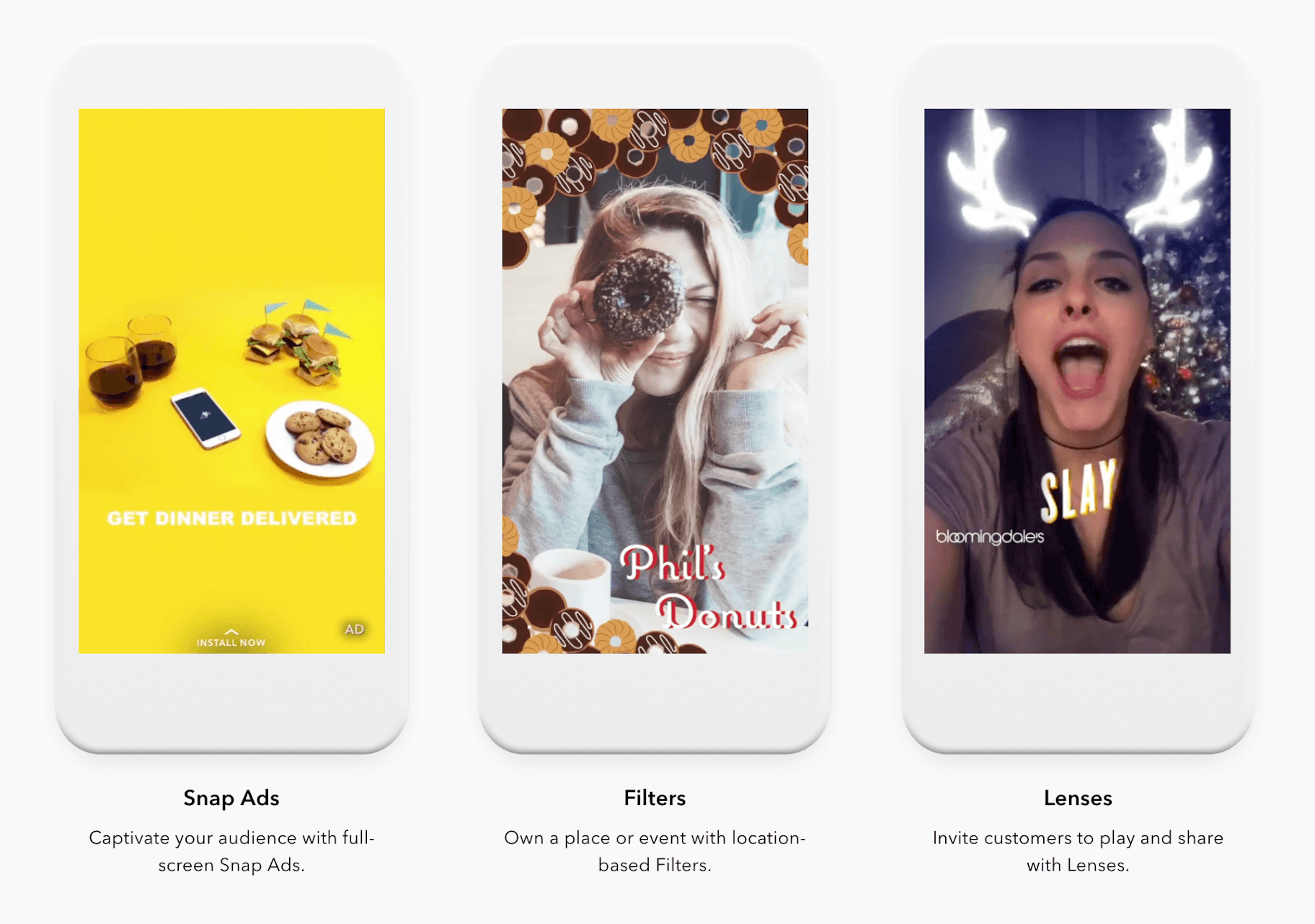
There are also four main customizable attachments that you can add to your Snap ads.
You can drive traffic to your website, increase app installations, drive views for long-form video content, or drive Snapchatters to your augmented reality experience.

Like most other social media advertising channels, Snapchat also lets you choose your objective.
This is based on the stage of the buyer’s journey your target audience is in: awareness, consideration, or conversions.
To learn more, check out: How to Use Snapchat for Business: The Complete Guide for 2021.
Facebook Alternative #7: Pinterest
With more than 300 million monthly active users globally, Pinterest is another effective alternative to Facebook.
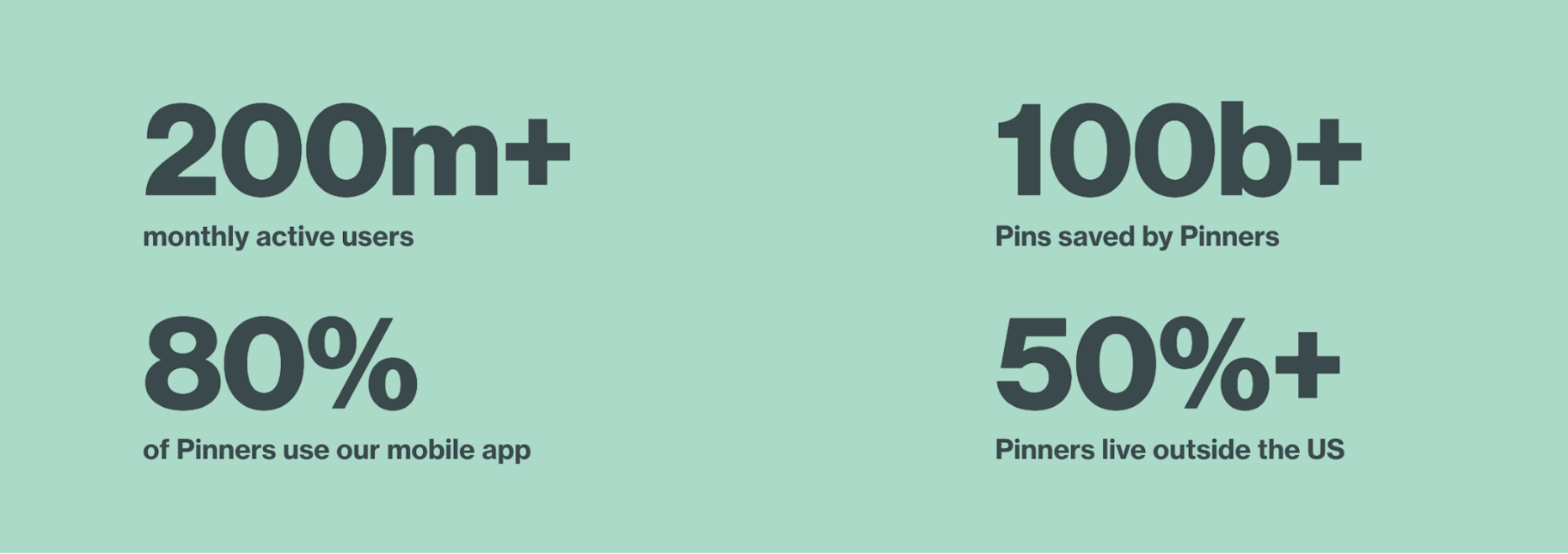
Our friends at Shopify partnered with Pinterest to discover how the platform drives online commerce.
They found that 93 percent of users were using Pinterest to plan their purchases and that the average order value of sales coming from Pinterest is $50 – higher than any other major social platform.
Furthermore, 78 percent of Pinterest users actually welcome content from brands on the platform, and 66 percent buy something after seeing a brand’s pin.
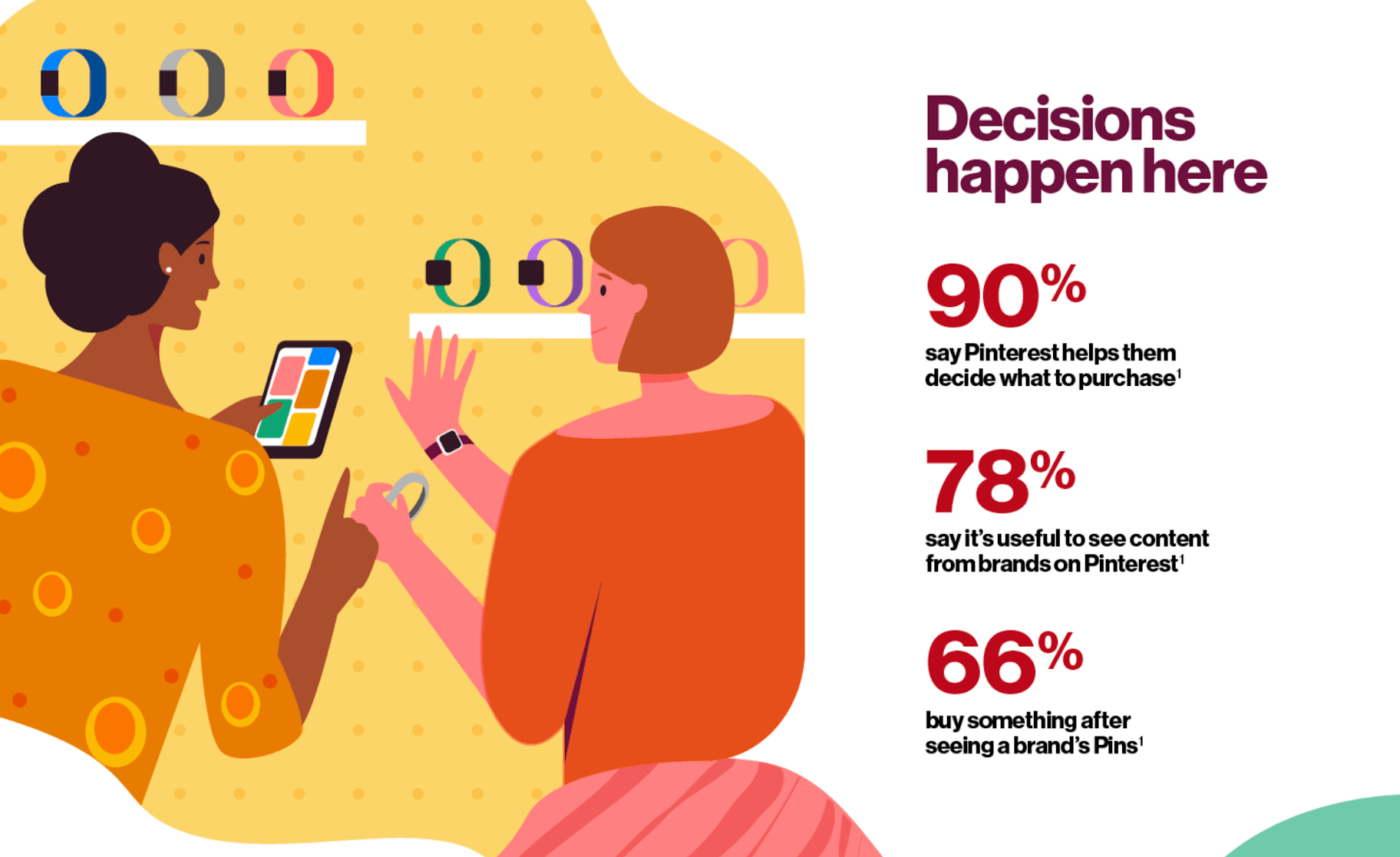
There are three ad formats to choose from:
- Promoted Pins
- Video Pins
- Promoted App Pins
Plus, Pinterest has five different campaign types:
- Traffic campaign: Send people directly to your website and pay per click.
- Awareness campaign: Get your business in front of people unaware of your brand and pay per 1,000 impressions.
- Video awareness campaign: Similar to a regular awareness campaign, but using Promoted Video Pins.
- Engagement campaign: Encourage Pinners to interact with your content and pay per engagement action.
- App install campaign: Get more installs for your app and pay by install or by click.
To get started, check out: How to Nail Pinterest Marketing & Pinterest Ads.
Bonus Facebook Alternative: Influencer Marketing
What exactly is an influencer?
Well, an influencer is anyone with a relatively large online following, including:
- Mainstream celebrities like Terry Crews.
- Niche celebrities such as crossfit games champion Jason Khalipa.
- Industry experts such as digital marketing expert Rand Fishkin.
- Micro-influencers (who typically have between 5,000 and 50,000 followers) such as yoga teacher Amber Lee Sears
Influencer marketing is when businesses pay, collaborate, or partner with an influencer to promote their product or service to the influencer’s following.
Before the rise of the internet, influencer marketing was only available to large brands with budgets big enough to satisfy rockstars and film stars.
Today, things are different.
In the last few years, influencer marketing has become an extremely popular and effective marketing strategy for businesses of all sizes.
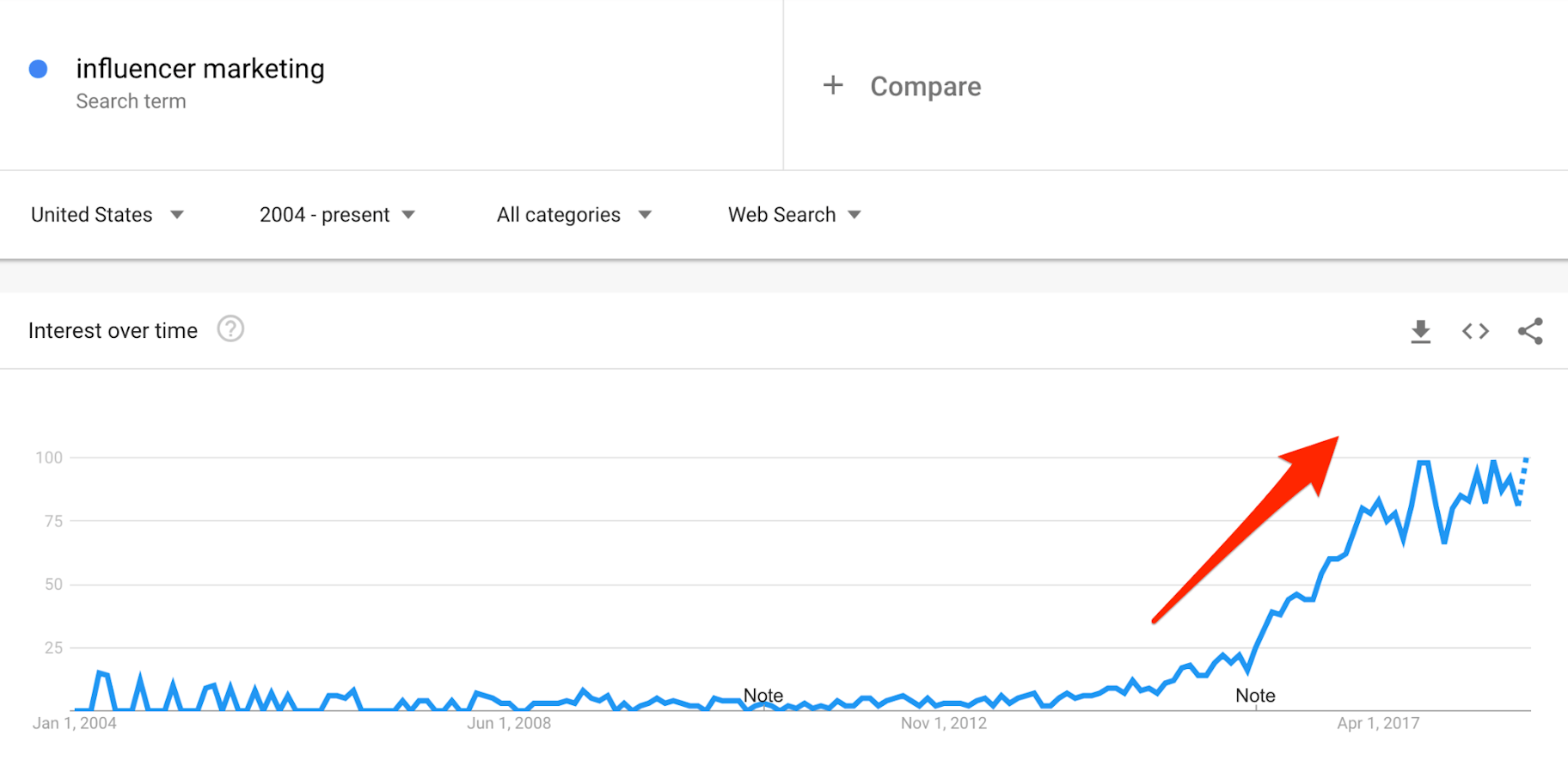
What’s more, micro-influencers actually perform better than big-name celebrities.
A survey conducted by Collective Bias found that only three percent of consumers are influenced by celebrity endorsements in their purchase decisions, while 30 percent of consumers are likely to buy a product recommended by a non-celebrity blogger.
It works too.
Karolis Rimkus began building his successful dropshipping store through influencer marketing: “At first I did a lot of influencer outreach. I would offer micro-influencers, people with like 8,000 followers, an item they could make a giveaway with, or just send them a few free items in exchange for mentions. It worked, and I was growing and making sales.”
To learn more, check out our guide: How to Do Instagram Influencer Marketing.
Summary
There’s a world of digital advertising opportunity that extends far beyond Facebook.
These eight advertising channels are fantastic Facebook advertising alternatives that you can use to diversify your risk and gain new advantages.
Here’s a quick round-up of each advertising channel:
- Google Ads: By far the largest digital advertising channel in the U.S., Google Ads has some of the most advanced targeting and tracking capabilities available.
- Instagram: The quickest way to diversify your advertising channels if you already use Facebook advertising, as Instagram uses the Facebook ads manager.
- YouTube: It’s the world’s largest video sharing platform and benefits from Google’s advanced advertising features. Perfect for capitalizing on the increase in video consumption.
- Twitter: A platform with many affluent Millennials. Start by simply promoting your posts, or dive in with full-blown ads.
- LinkedIn: The leading social channel for business-to-business marketers. LinkedIn provides three ad types and plenty of targeting options.
- Snapchat: Dominated by younger people, Snapchat is the perfect opportunity for those targeting generation Z.
- Pinterest: Pinners produce higher average order values than other major social channels. Plus, they actually like content from brands.
- Influencer marketing: Extremely powerful when done right, and available to businesses of all sizes.
Which advertising channels are you currently using and why? Let us know in the comments below!

